There are so many benefits of hiking with your dog. Not only is hiking good for your dog’s physical and mental health, but it can also reduce stress, improve sleep quality, and more. Hikes became more frequent in the pandemic period. Most of us are planning on going hiking with our dogs during weekends. In this article, we have listed the top 10 most common dog injuries that can happen on a hike. To avoid them, be sure to go hiking fully prepared and know how to react in case your dog needs help.


1. Cuts And Wounds
Some of the most common injuries that can happen to your dog are surely cuts. Most of them are minor and they can heal in a few days. However, sometimes your dog may get large cuts from rough areas or by sharp objects. Here is how you should treat minor wounds: wash the area with water and prevent your dog from touching or licking the wound. Furthermore, bring an antiseptic spray if you plan on going for a very long hike. If the cut is medium, do all that and apply a bandage.


However, be sure to go back and seek veterinary help if you notice that the injury worsens. Large cuts and bleeding wounds may be extremely painful to your dog. Not only that but they can easily get infected as well. A veterinarian will treat the wound with antibiotics, painkillers, or stitches if necessary.
2. Sunburnt Skin
It is not unusual for dog owners and dogs to go hiking in spring or summer. But just like to you, too much sun exposure is not good for your dog either. Some dogs have greater potential for sun damage than others. For example, hairless dogs, dogs with thin hair, and white dogs. However, even dogs with a thick coat can develop skin damage. To protect your dog from such injuries, be sure to apply child-safe or dog sun protector cream or spray.
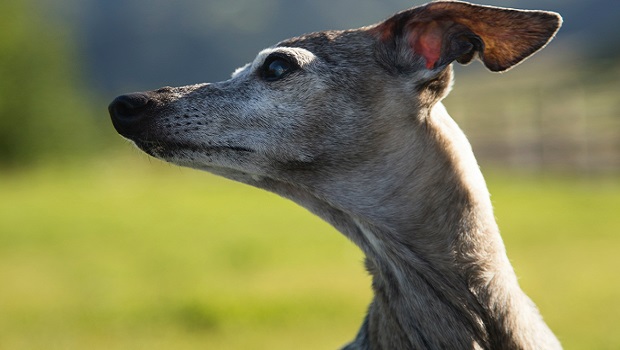

Avoid hiking in the direct sun for too long and take frequent breaks. Don’t forget to bring a lot of water on your hikes. If your dog gets sunburnt anyway, you will notice his skin looking pinker. In that case, move your dog to a shady space and limit the dog’s exposure to the sun. Visit the veterinarian as soon as possible if the skin gets very red.
3. Eyes Injuries
Dogs love nature and the outdoors. It makes them feel free and joyful. They love to explore and sniff around. It will often happen that your dog will spend a lot of time playing, running, and jumping around. Mostly, this will only bring happiness to your furry friend. However, the dirt can get into your dog’s eyes which can cause swelling.
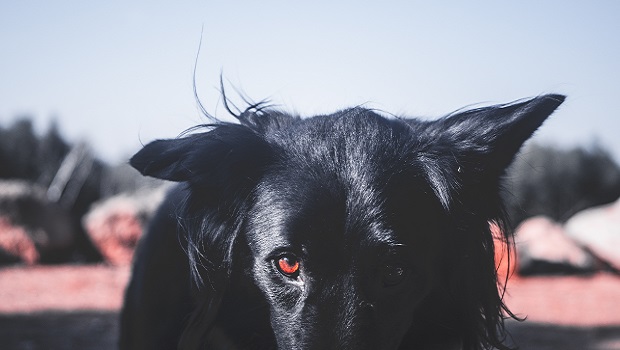

If you notice that, see if there is anything caught in your dog’s eye. Moreover, clean the eye with warm water and make sure your dog avoids agitating his/her eye. Wait for a few hours to see if the eye got infected.
4. Foreign Body Ingestion
I bet you have seen your dog swallowing sticks, bones, balls, toys, and other objects in your home or on your walks. Some objects are small enough to easily pass through your dog’s gut without leaving consequences. Most of the time, you won’t probably even notice that your dog ate something. But what happens if your dog stumbles across an object on your hike and decides to swallow it? First of all, try and remove the object from your dog’s mouth because large objects can easily get stuck which can cause vomiting.
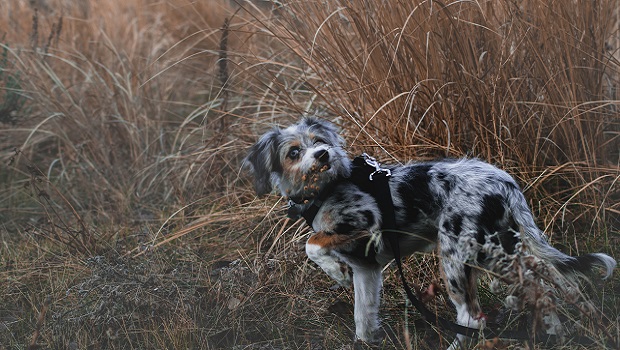

If you don’t succeed, monitor your dog’s behavior. If you notice that the object remained inside of your dog’s intestine, call your vet immediately and follow his advice. Don’t take risky actions on your own. Your veterinarian will guide you the best. Although it is not easy for you to follow every step that your dog takes, checking on his actions frequently is the best you can do to avoid foreign body ingestion. Keep your dog on a lead or close to you.
5. Sprained Leg
Long walks, hikes, and lots of play can lead to soft tissue injuries such as sprains. Hyperactive dogs may get them a lot easier. They happen if your dog overstretches. You will instantly notice if your dog gets a sprained leg because he or she will start limping. If that happens during your hike, it is suggested that you take a break and continue going much slower.
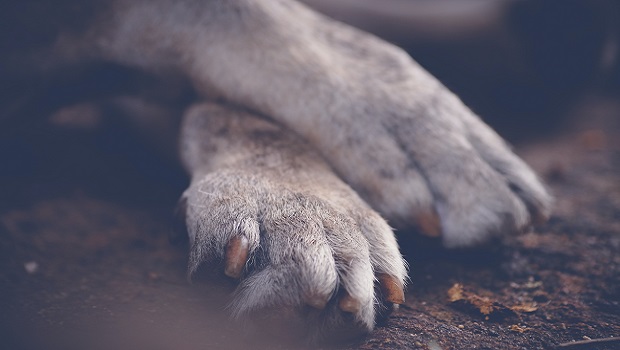

If you have the possibility, apply ice to the injury. If necessary and possible, go back and carry your dog for as long as possible. Most sprains are not serious and they heal fast. On the other hand, serious injuries require physical therapy and anti-inflammatory drugs.
6. Broken Bones
What you can do to prevent a fractured bone in your dog is obedience training. Unfortunately, these injuries may happen anyway. Some of the symptoms of a broken bone are pain, whining, inability to walk, bruising, swelling in a limb, etc. It is needless to say that if your dog breaks a bone during a hike, you should get in touch with your vet immediately.
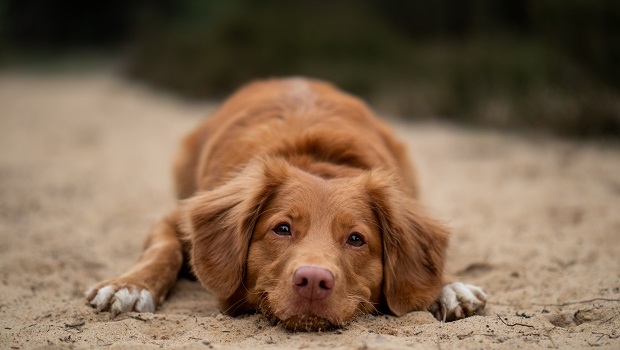

What you can do until you get to the vet is remain calm. If your dog sees you panicking, he or she will panic as well. Also, avoid touching your dog’s limb and carry him or her to a safe location.
7. Another Animal Attack
Incidents like these are definitely out of our control. We can try and prevent other animals from attacking our dog, but what if we don’t succeed? It is suggested that you avoid grabbing the other animal by the head. Here are a few suggestions that you can do: pull on the animal’s rear, look for a long and thick tree branch and try to separate the two animals, distract the other animal by making loud sounds, etc.
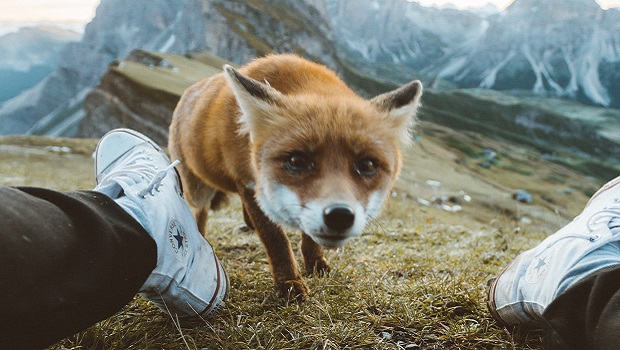

Another thing that you can do is go on a hike prepared and bring pepper spray. There are pepper sprays that won’t harm the animal or leave any consequences but allow you to save you and your dog and walk away slowly. In case your dog got bitten or wounded, seek medical help.
8. Allergic Reactions
Some of the causes for allergic reactions in dogs are getting in contact with grass, plants, new food, bug bites, mold, pollen, etc. The most common symptoms are a puffy face, itchiness, sneezing, redness of the skin, and more. If your dog has already had experience with allergies, do not risk it. Avoid going on a hike unprepared.


Bring medications for treating allergy reactions. On the other hand, if your dog experiences an allergy attack for the first time during the hike, there is nothing much that you can do. Rinse the affected area with warm water and wait for it to pass. Visit the vet who will probably prescribe antihistamines to treat your dog.
9. Intestinal Infections Caused By Giardia
When on a hike, you probably wouldn’t drink the water straight from a stream, right? You shouldn’t let your dog do that as well. Even though dogs have tougher guts, they can still be susceptible to giardia. This parasite causes both people and animals to feel sick and end up with vomiting and diarrhea.
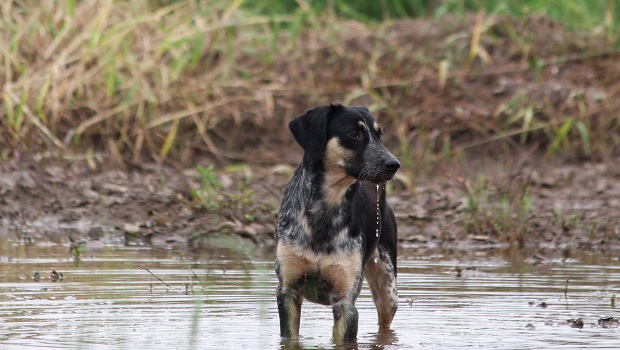

What you can do to prevent your dog from getting infected with this parasite is to not allow your dog to swim in lakes, ponds, and springs. Also, be sure to bring your water or filter the water that you find on your way. You should vaccinate your dog regularly as well as treat him with oral dewormers that will help dogs get rid of intestinal parasites. Also, apply tick and flea preventative before the trip.
10. Heat Exhaustion Or Dehydration
Lastly, you may notice that your dog feels exhausted after a long walk. Many dogs will not tolerate high temperatures for a long time. If you notice that your dog is restless, lethargic, has excess salivation, dry mouth, and an increased heart rate after having walked on the direct sun for a while, move to an indoor or shady space.


Give your dog water because he may be both exhausted as well as dehydrated. Help your dog stay cool, reduce the panting, and avoid exercising during the heat of the day. Always have enough water for your dog and take frequent breaks.
What To Do If Your Dog Gets Injured
No matter how well-prepared you are, injuries still happen. It is important that you remain as calm as possible because your dog knows if you panic. If a small injury happens, such as a cut or a small insect bite, take a break, clean the cut or bite with water and apply ice if possible. You may bring a pain-relieving cream with you and apply it to the injury.
However, in case your dog suffers a large injury (breaks a bone or sprains the leg), you should get help with transporting him. Small dogs can easily be carried in your hands by supporting the head and hips. Big dogs will probably be able to walk on non-injured legs with your help. In case your dog is unable to walk and you cannot carry him, lay him on a blanket and carry him in it. During the transportation, keep your dog warm and elevate the broken bone. Moreover, contact the veterinarian and follow his or her advice until you get to the clinic.
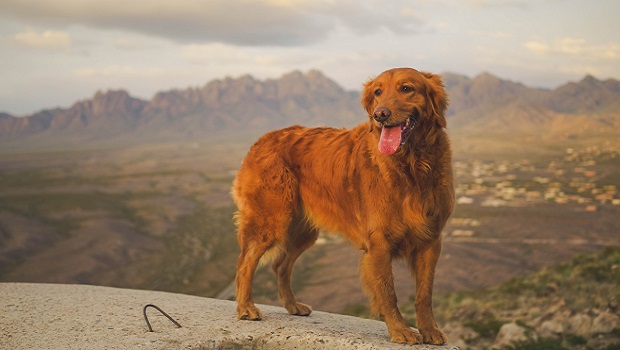

If you want to prevent any other injuries, dehydration, and heat exhaustion from happening, we suggest you pay attention to your dog all the time, scan the surrounding area, and try to avoid obstacles. Just in case, prepare a dog first aid kit that will consist of gauze pads, an ice pack, tweezers, towels, pepper spray to avoid animal attacks, medications to treat allergies, gloves, other. Be sure to take frequent breaks, give your dog water, and avoid exposing him to the sun too much.
Conclusion
Whether you are an experienced hiker or new to all of it, you should know how to prepare before going on a hike with your dog. What you should do is knowing how many miles your dog can walk per day. Moreover, find dog-friendly hiking trails, and do not forget to bring a lot of water, food, and dog treats. Remember not to panic and keep your dog calm. If you are not sure how to help your dog, do not hesitate to call your veterinarian and ask for advice.



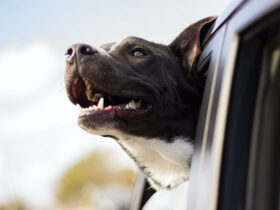















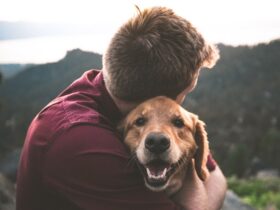




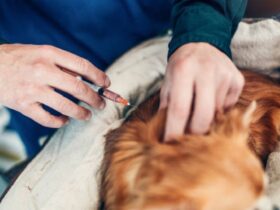
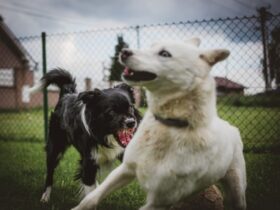




Leave a Reply